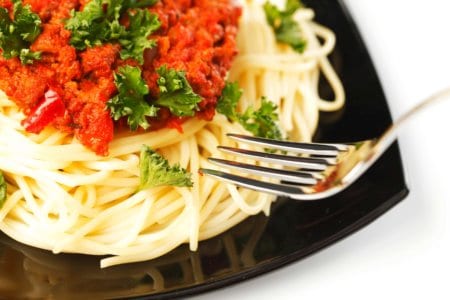Restaurant Accounting is as essential to the success of your restaurant as protein is to any chef’s entre. And just as chefs value fine ingredients, savvy restaurateurs value some special ingredients in restaurant accounting.
Searching for the Sweet Taste of Success

Perhaps you recently began a restaurant enterprise in NYC. If so, we hope you have not begun to taste bitter flavors of failure. In the first place, you should know some basic statistics behind the 2018-2019 market.
- “Not surprisingly, it’s another year characterized by moderate growth. The Food Service Equipment and Supplies Association began tracking growth in 1970. And since that time, the industry’s annual growth rate is a solid 6.4 percent.
- However, if you look at it for the past decade, it drops down to 3.7 percent. There’s definitely a period of moderate growth in the post-recession environment.”
So in a restaurant world, a 3.7 percent sales boost is a good performance. Then, how do you measure your success week to week or month to month? Gavrilov & Co believes one thing is certain. You must keep an eye on your data stream to keep ahead.
- Add to that fact, add a dash of despair. If this is your first year, it is a scary time. This is because 46 % of all small businesses fail in their first year because of bookkeeping and/or accounting errors.
- Of that 46%, 82% fail their first year because of cash flow related problems.
Gavrilov & Co. Cooks Up Solutions to the Cold Statistics
Don’t worry, we are not here to cook up gloom and doom. Furthermore, we can show you how to address these problems and avoid being part of the failing percentage. And if you have special problems or questions, please refer to our pages on specialized restaurant assistance. We can help.
Major Accounting Ingredients That Spell Success
Let’s begin with Five Major Accounting Ingredients that Will Lead to Your Restaurant’s Success– On the Books and On the Stove.
There is certainly more information on the essentials of restaurant accounting than one blog can capture. So, consider this Part I of our three part blog series on the Ingredients of Your Restaurant Accounting Success.
Number 1 Ingredient for Restaurant Accounting Success: Chart of Accounts
The Chart of Accounts is key to your understanding of restaurant accounting. It is abbreviated as the “COA.” And the resulting knowledge of the “COA” will improve your conversations about bookkeeping and accounting.
Put briefly, the COA breaks down your restaurant finances into categories. You’ll recognize categories like assets, liabilities, revenue, expenses, and equity. Slightly less familiar bite-sized pieces of data will make up your sub-categories of business line items: Marketing, supplies, inventory, and of course, sales.
From the Experts Comes a Deeper Look into this Basis of Restaurant Accounting
According to Investopedia, COA or “A chart of accounts (COA) is an index of all the financial accounts in the general ledger of a company. In short, it is an organizational tool that provides a digestible breakdown of all the financial transactions that a company conducted during a specific accounting period, broken down into subcategories.”
How a Chart of Accounts (COA) Works for Your Restaurant

With a COA in your back pocket, you can always show off your healthy business to potential investors. The COA separates expenditures, revenue, assets, and liabilities. Thus, it ensures that financial statements are in compliance with reporting standards.
Why does this matter?
The COA empowers you to have real-time insights into financial data related to your restaurant revenue or spending. We can’t help but smile when we remind you that the COA will really come in handy when it’s time to file your corporate taxes. Check out a listing of common elements within a COA at this helpful online resource.
You might not find it as exciting as your chef’s next cheesecake recipe or risotto invention, but it’s just as important to your success.
Restaurant Accounting Ingredient Number 2: Cost of Goods Sold
Second of the ingredients that the Gavrilov & Co accountants have mixed into the recipe for restaurant success is the COGS. This financial document called the COGS or “Cost of Goods Sold” helps to formulate the total cost that goes into creating each delicious product you are selling.
Think of COGS as the cost of all the ingredients and items on your restaurant’s menu. Some folks still use “old school” arithmetic. They calculate COGS by how many menu items XYZ sold multiplied by how much it cost to make. However, there is an easier way to calculate your COGS and restaurant accounting teaches it:
A Mini-Lesson: Restaurant Accounting and COGS
Restaurant accountants teach restaurant owners to calculate COGS at the same time they take inventory every week.
~Here is the secret formula: Beginning Inventory minus Ending Inventory = equals COGS…*
(By the way, remember that note your COGS ignores the cost of labor or utilities. Consequently, it only pertains to the ingredients. These are the ones that go into those luscious dishes on your menu.)
Counting Up Your Profit Per Plate

Tie your COGS to the profit you make per plate, and you will begin to understand how much profit you make overall. This means, not only each day or week’s profit. We want you to be able to see the profit on every plate of food listed on your menu.
Restaurant accounting demands that you focus on watching this number. Likewise, successful restaurateurs know that only by following this formula can you cook up a healthy profit. Consequently, the success of your café, restaurant, or bistro depends on your accounting knowledge. It might help you decide which items and how many should be on the menu.
*That little restaurant accounting formula is the “secret sauce.” And, it is behind the success of many fine NYC eating establishments.
More to Come in Our Next Blogs
We have 3 more fine ingredients from the accountant’s “ingredient” shelf for you. Gavrilov & Co will be discussing several more tasty topics from the world of restaurant accounting. These include:
- Prime Costs,
- Occupancy Expenses,
- Operating Expenses,
- Restaurant Labor Cost,
- And Cost to Sales Ratio
Plus, we’re going to give you a baker’s dozen hot tips. These tips will reveal what you need to know before you hire an accountant, and why it’s important to trust a person who has hands-on, real life experience in the restaurant world. You will soon be savoring the success only available through up-to-date restaurant accounting techniques. Bon Appetit!

